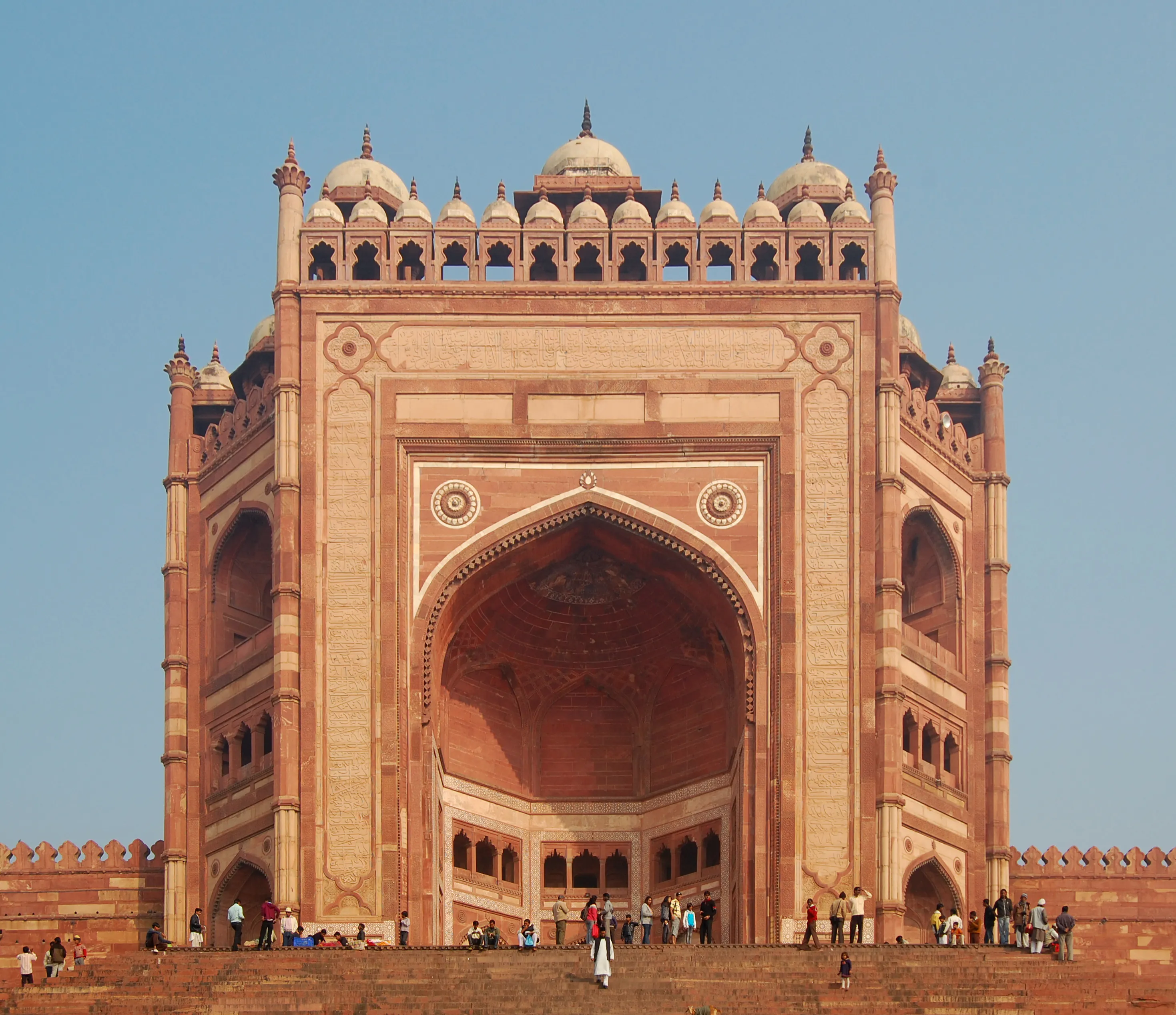
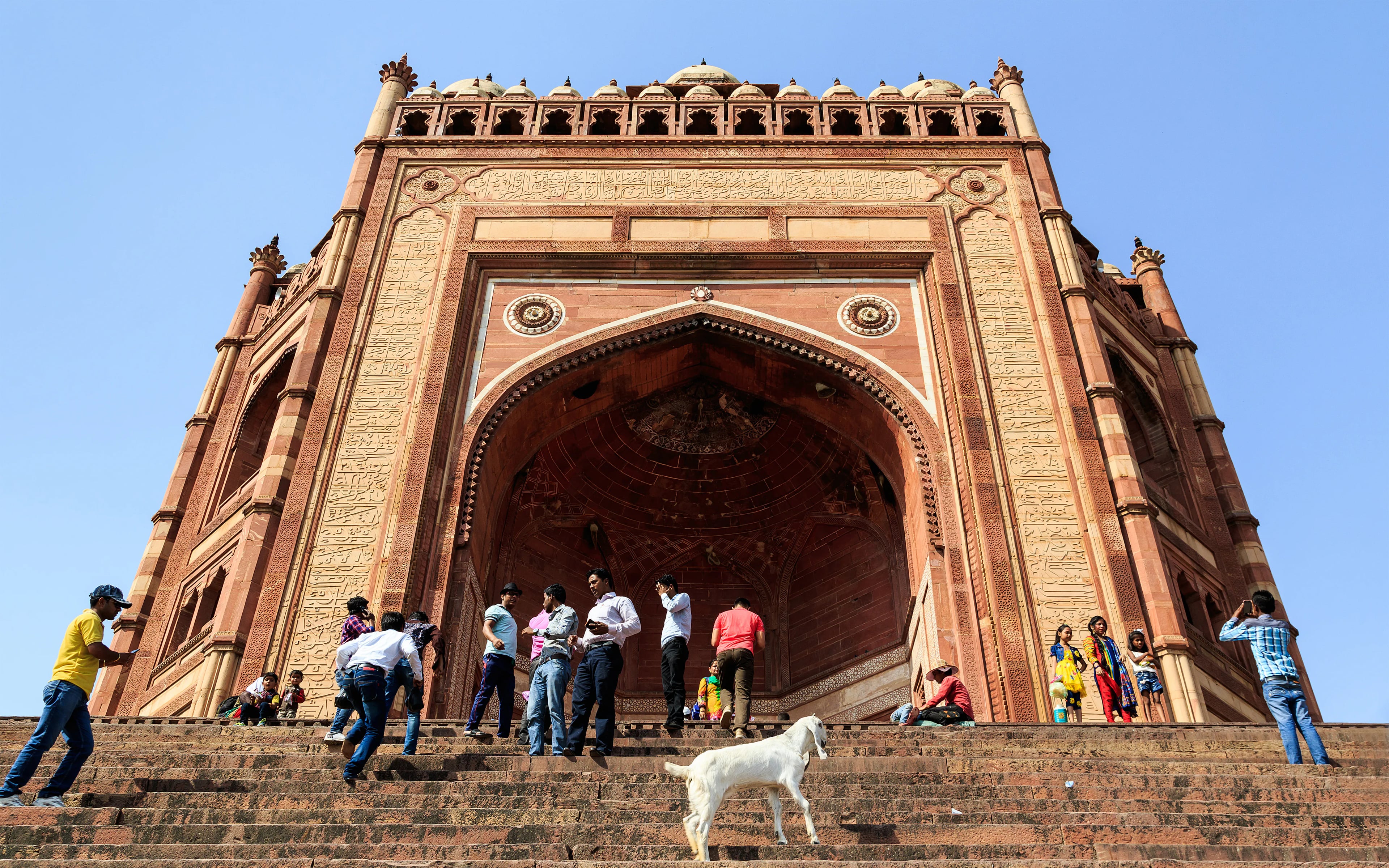
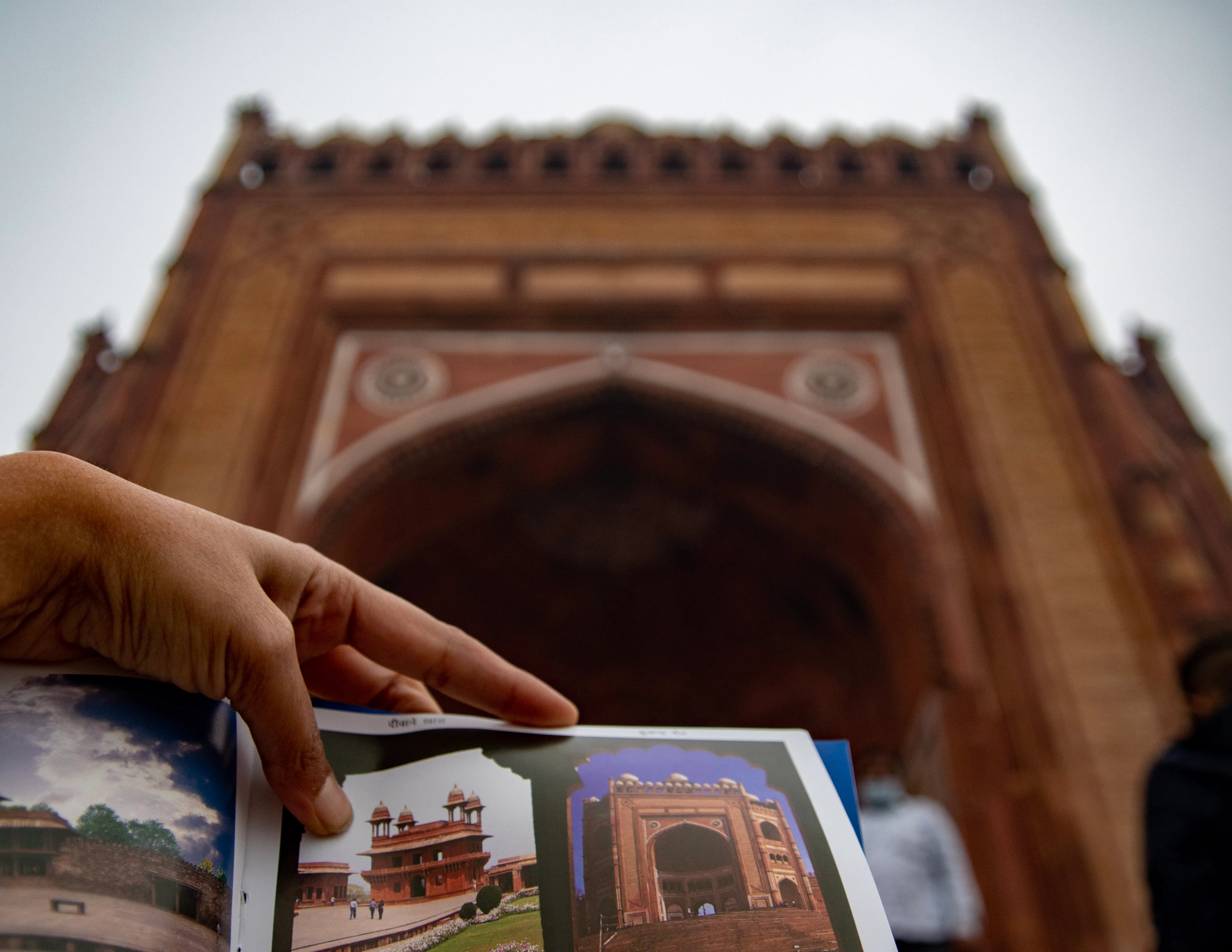
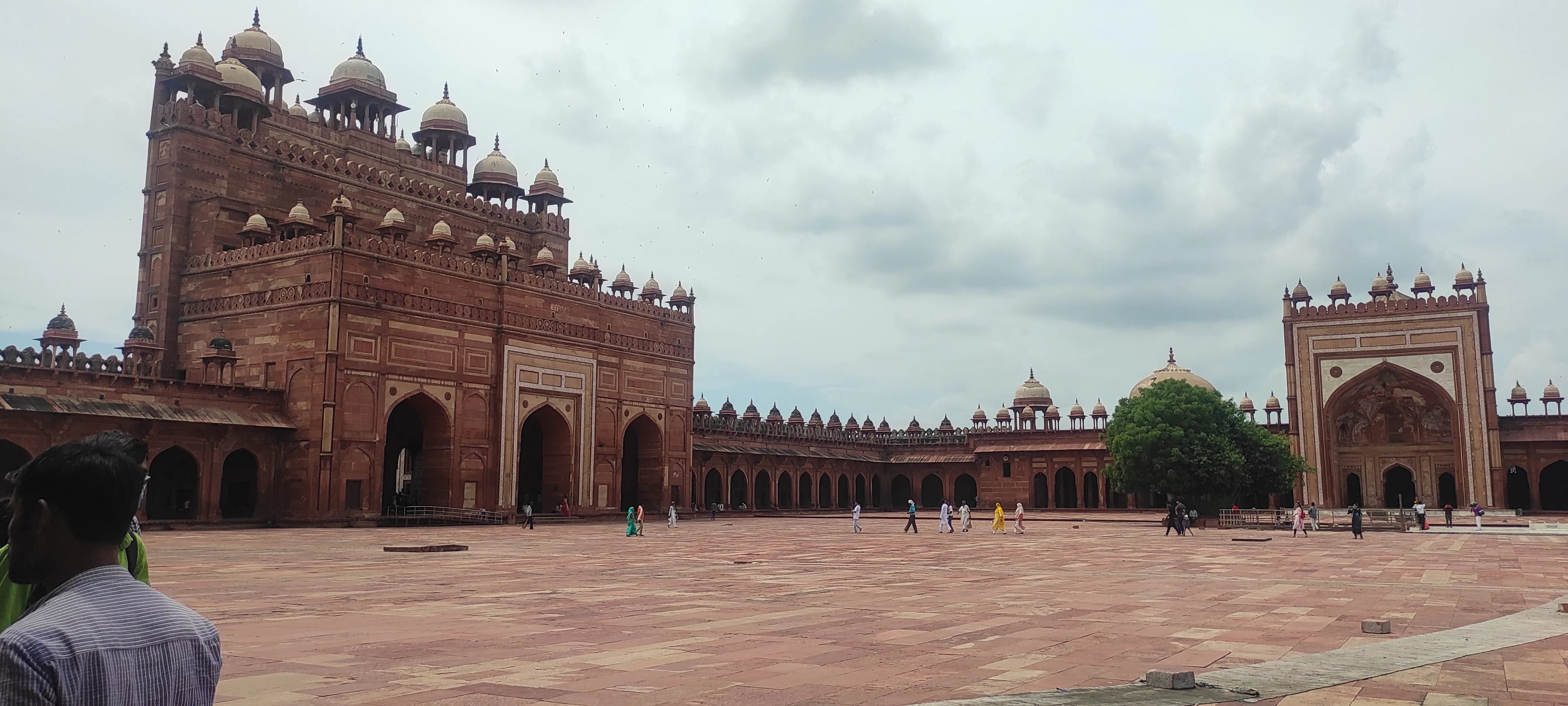


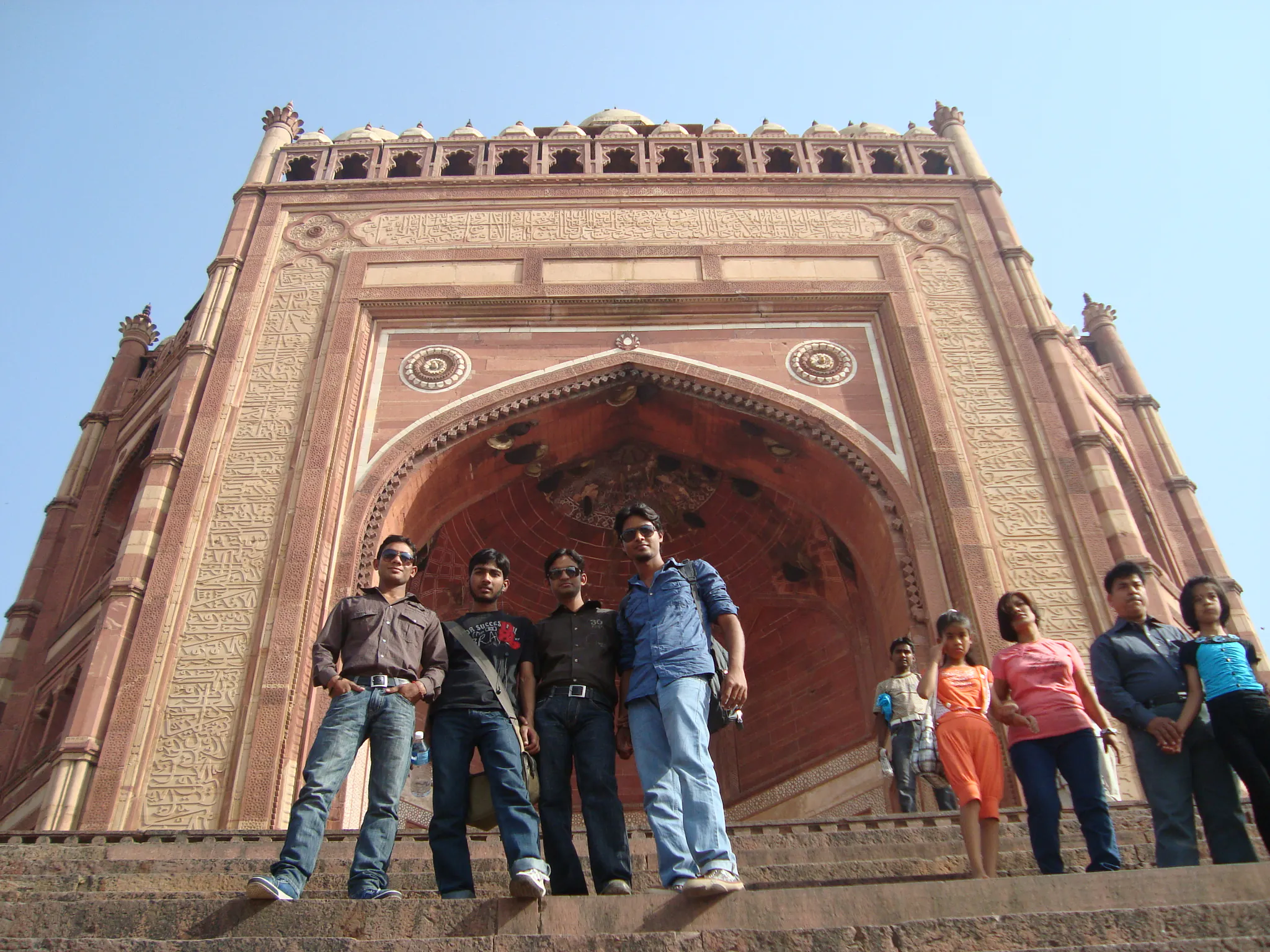
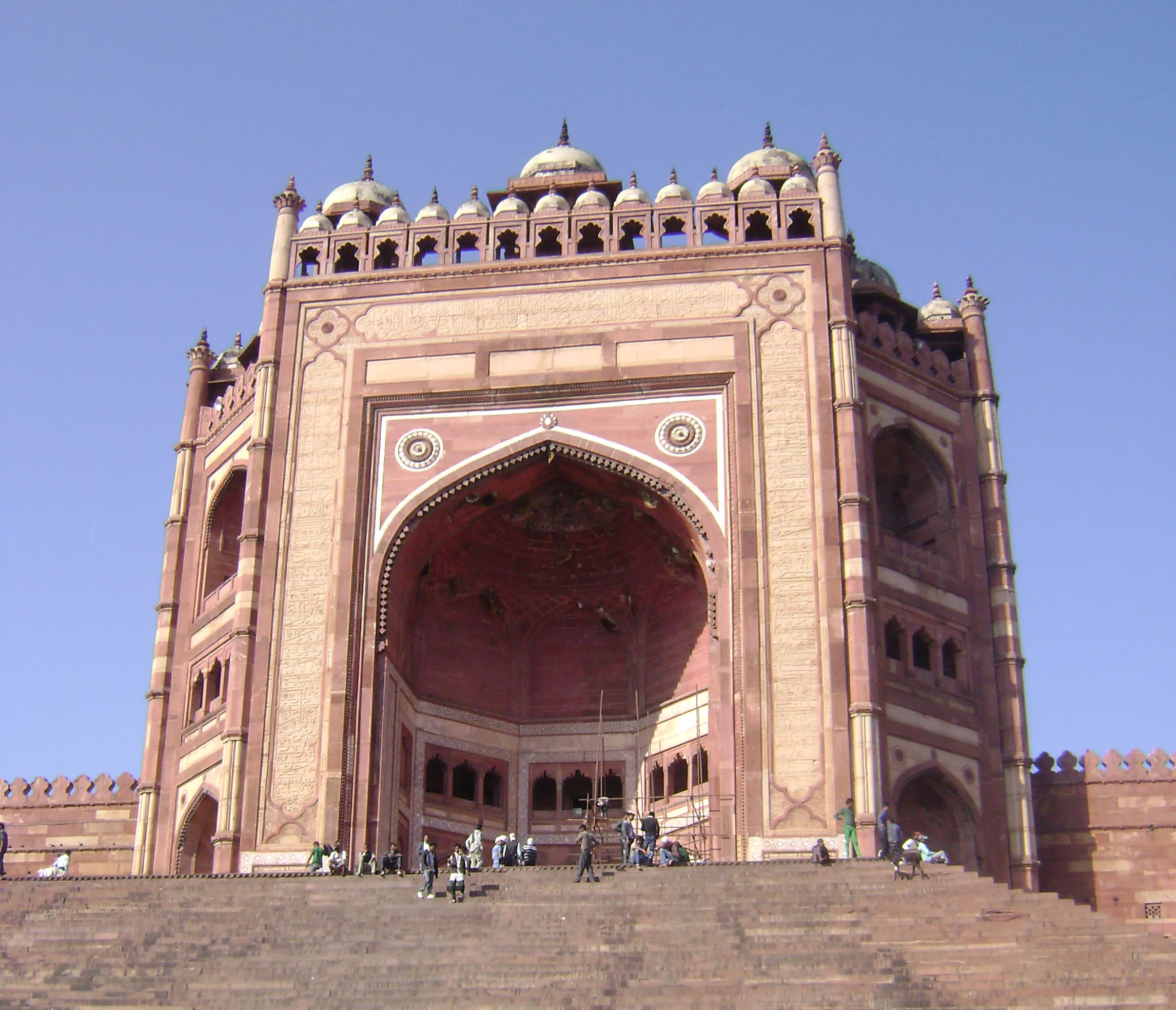
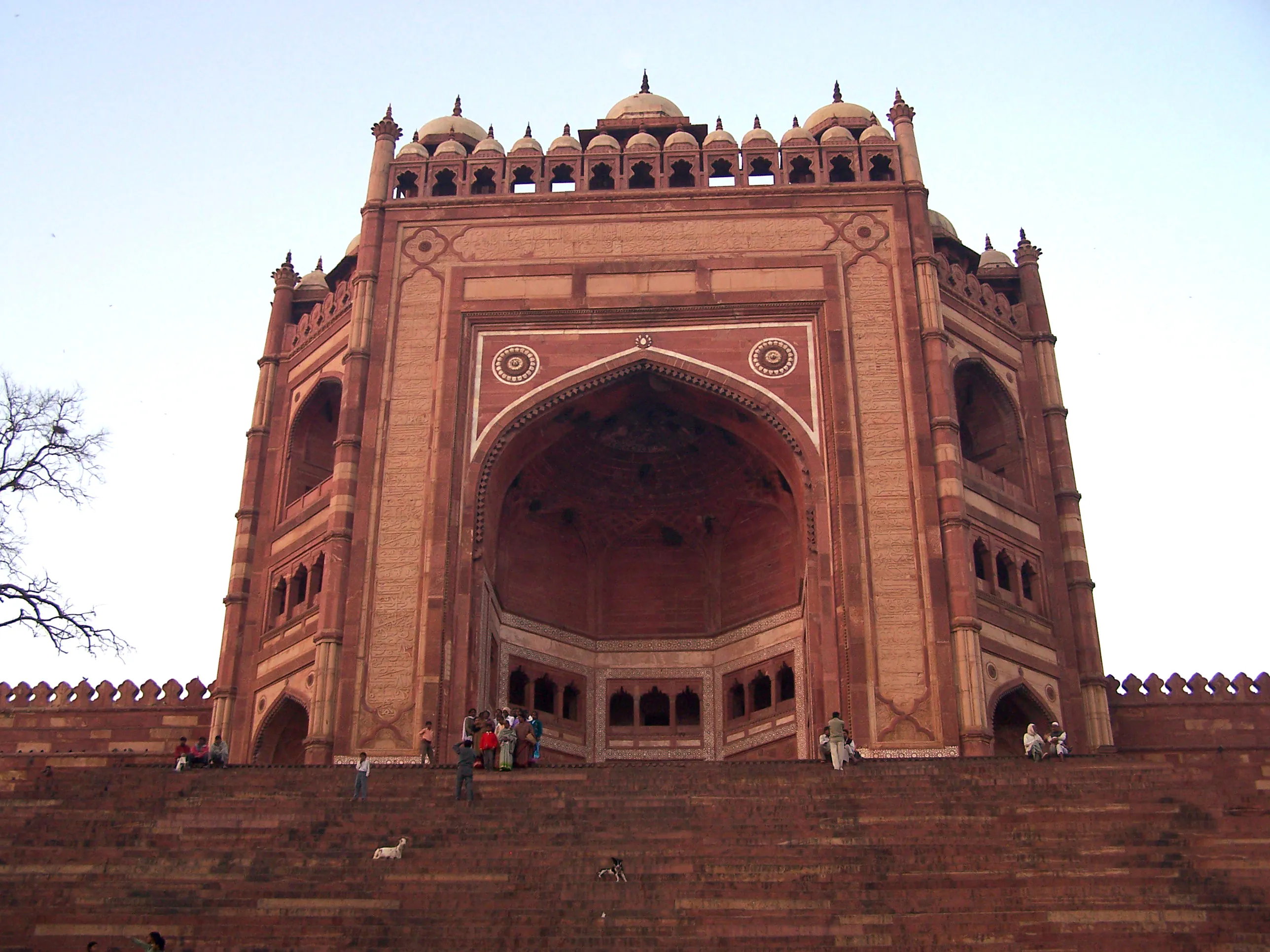
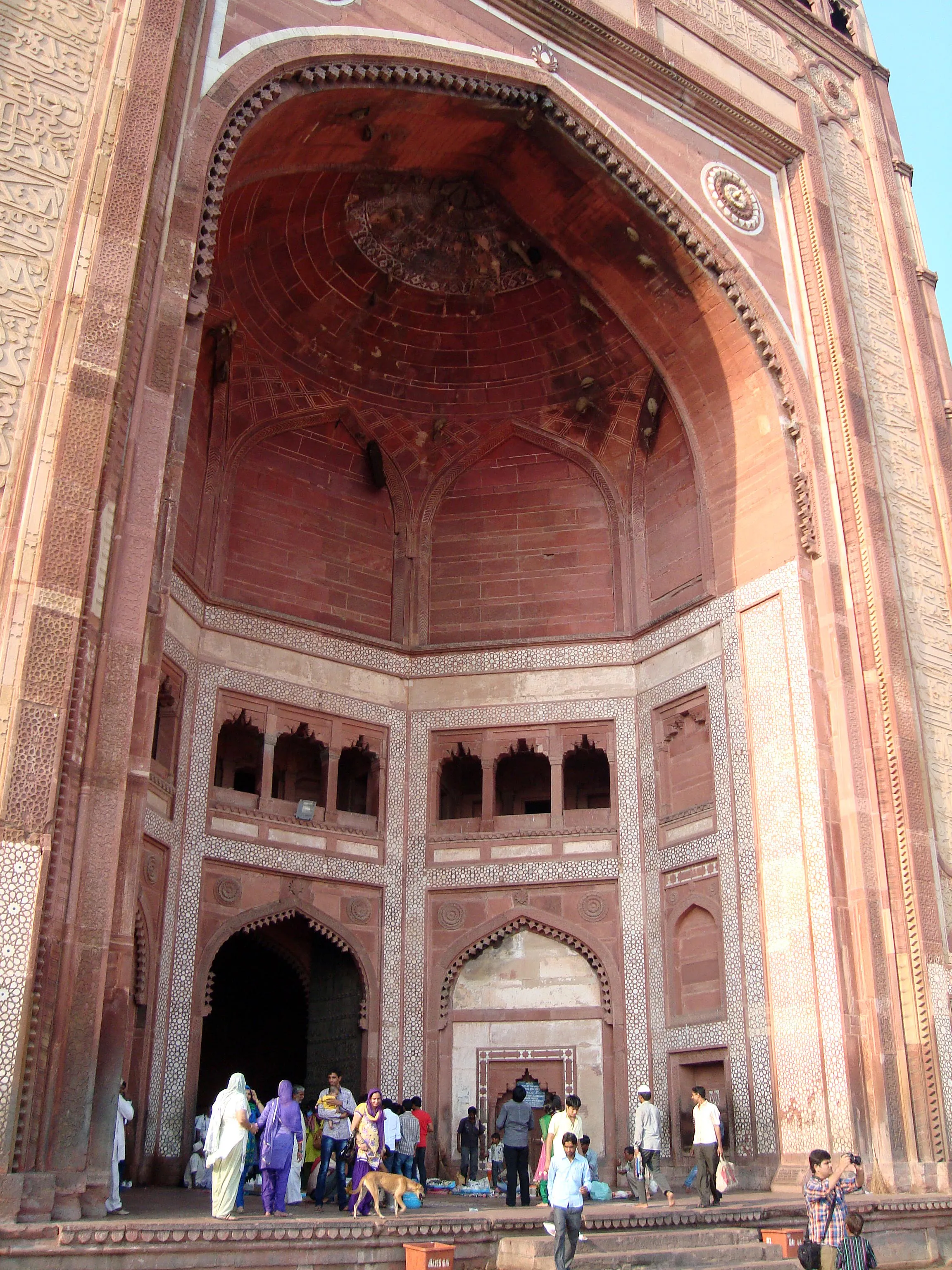
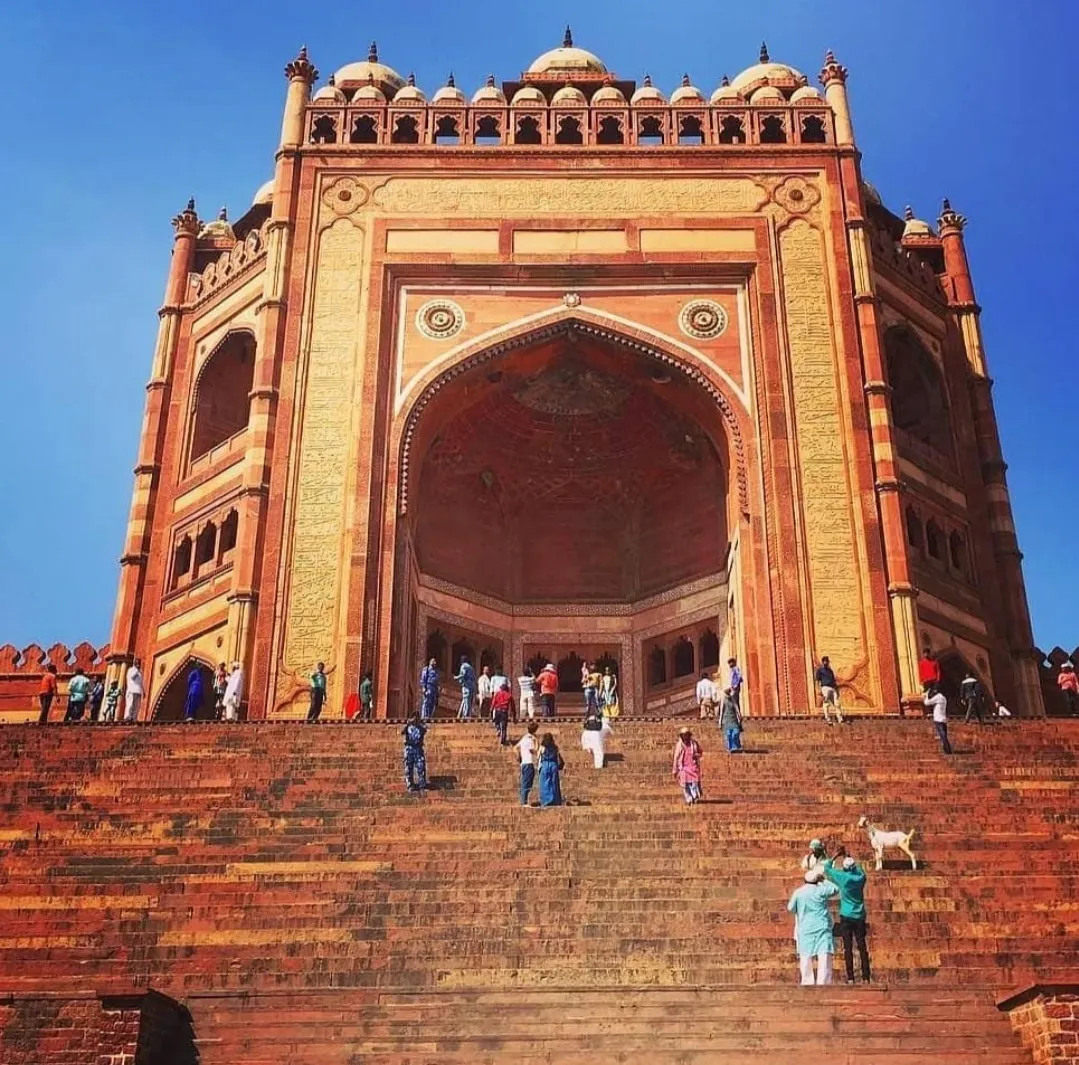



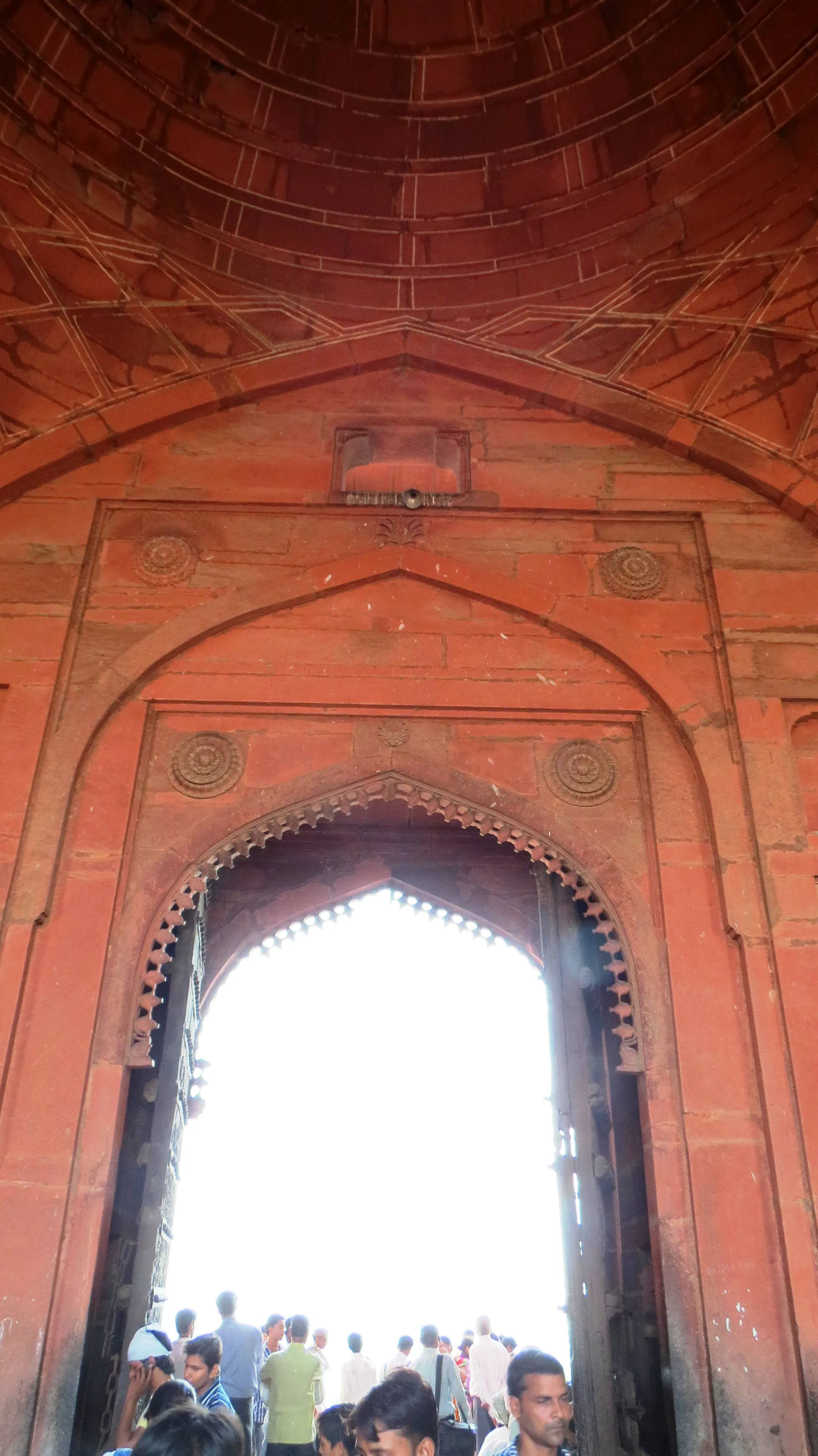
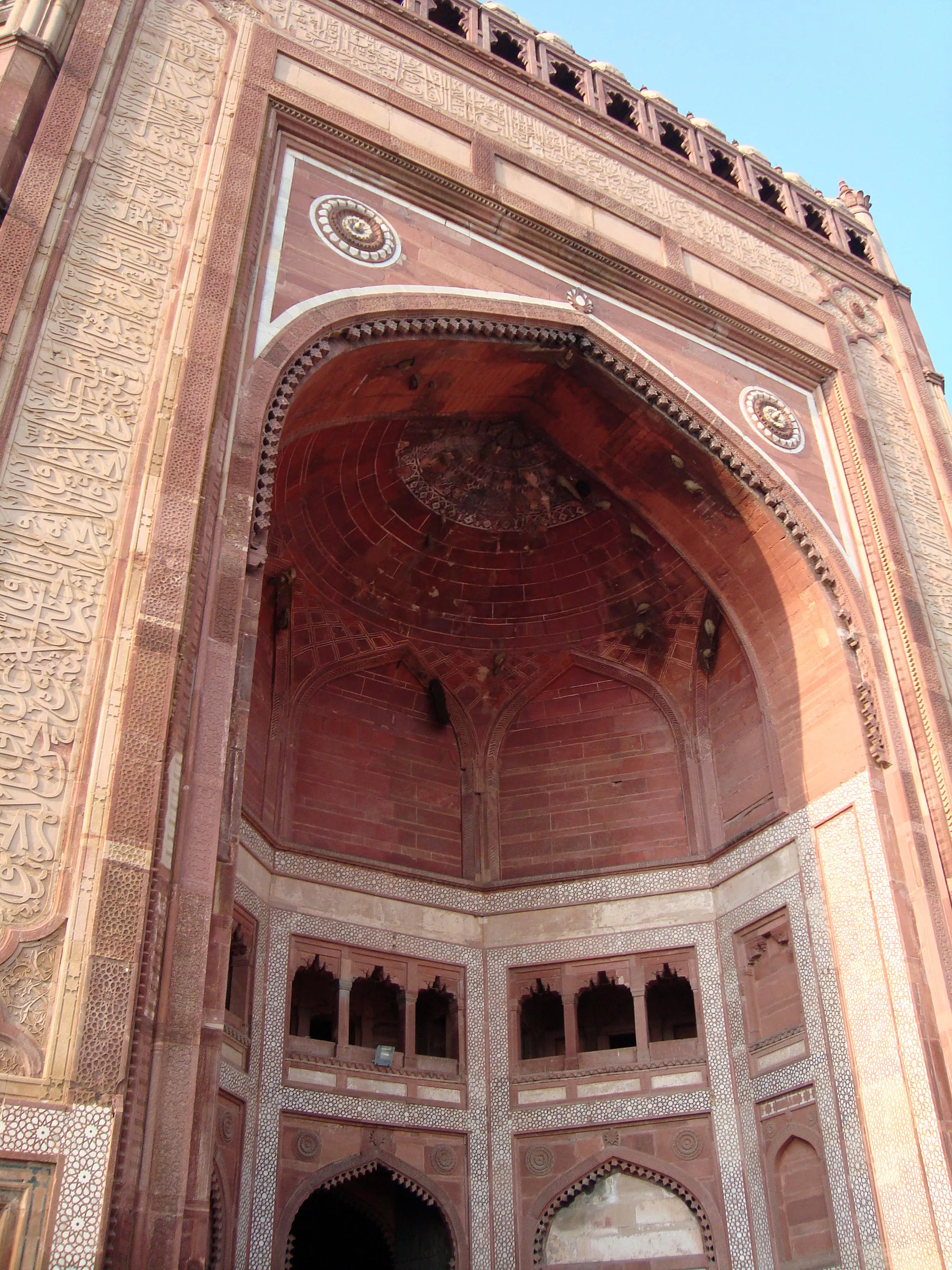
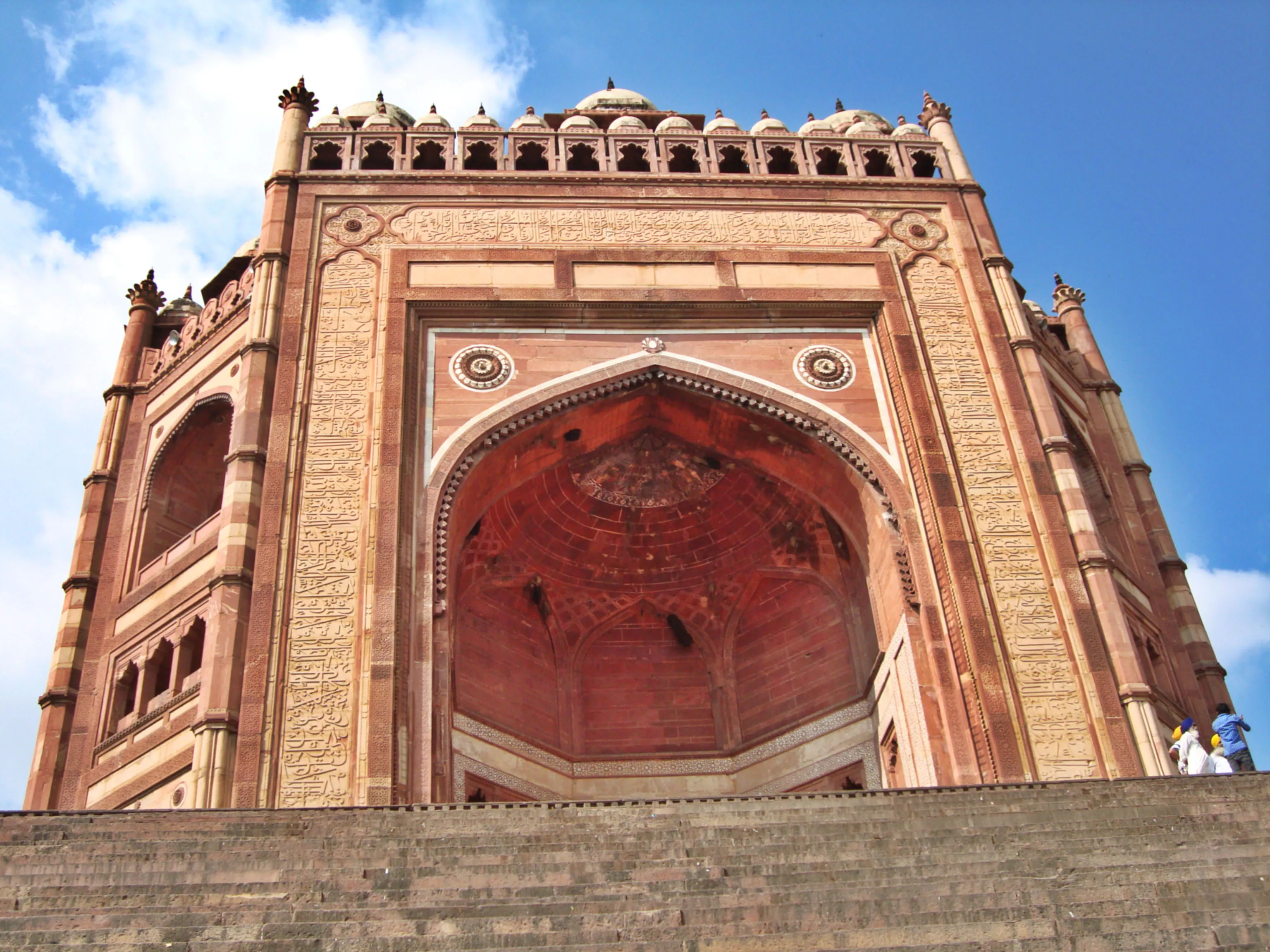
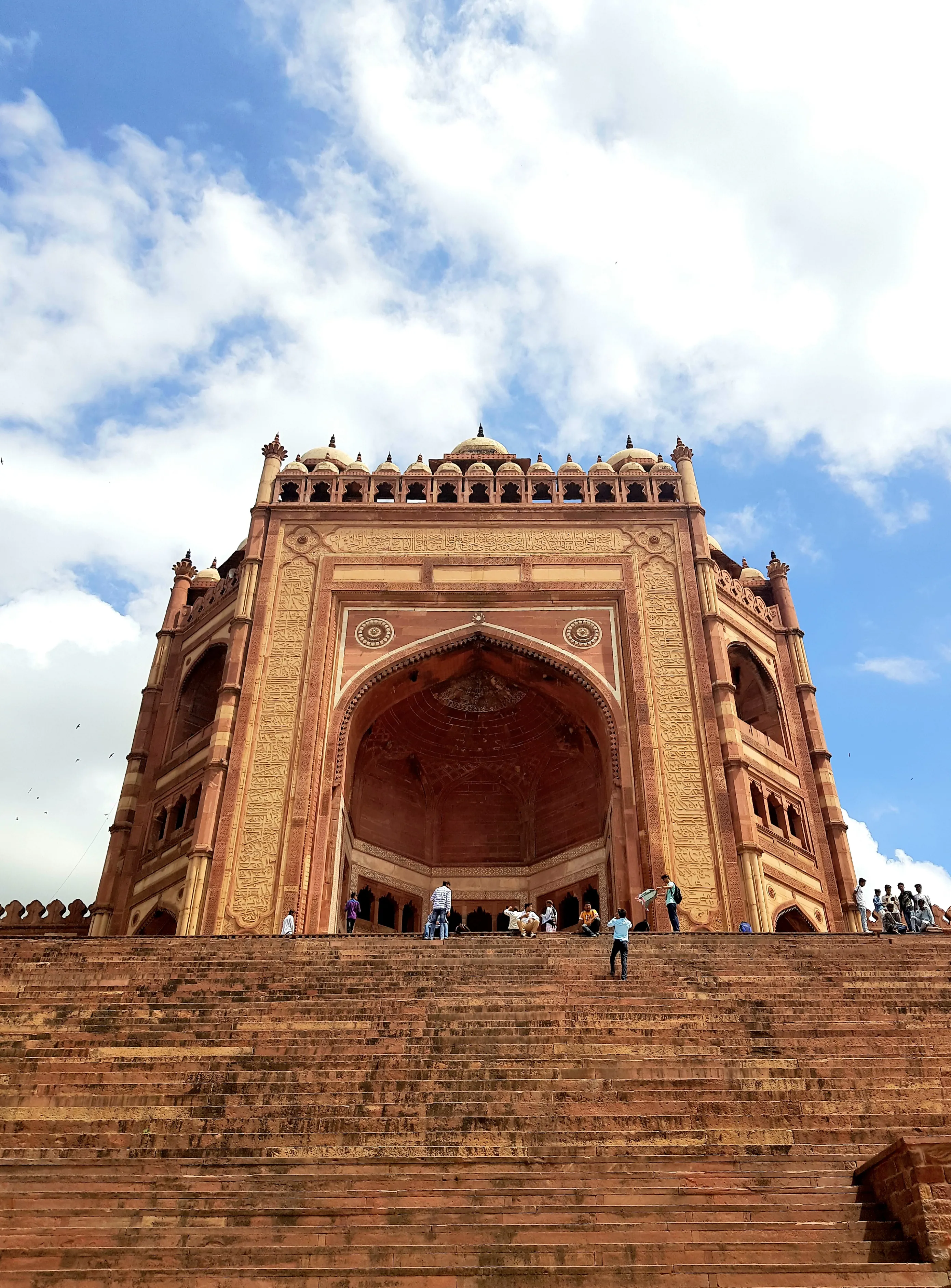
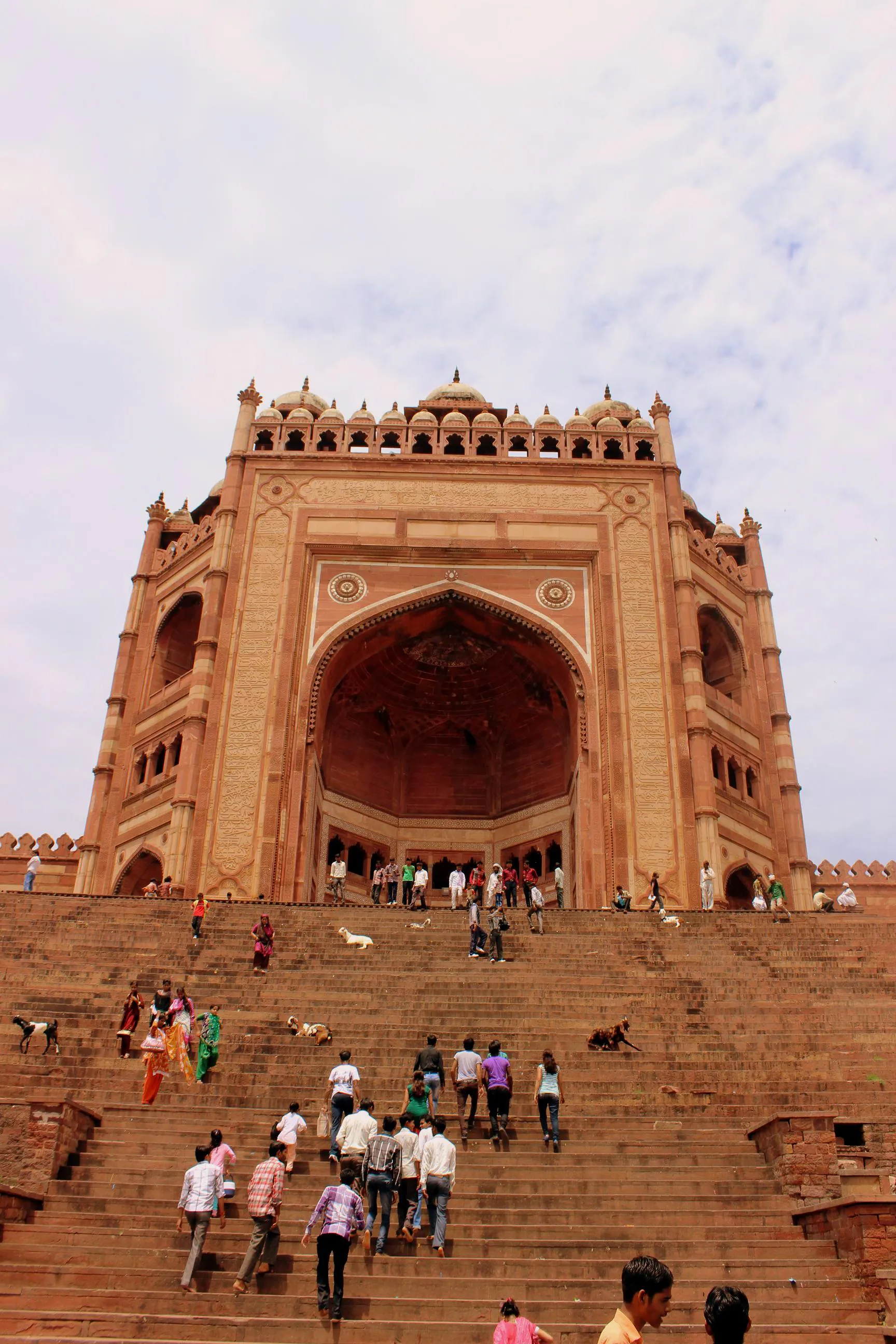
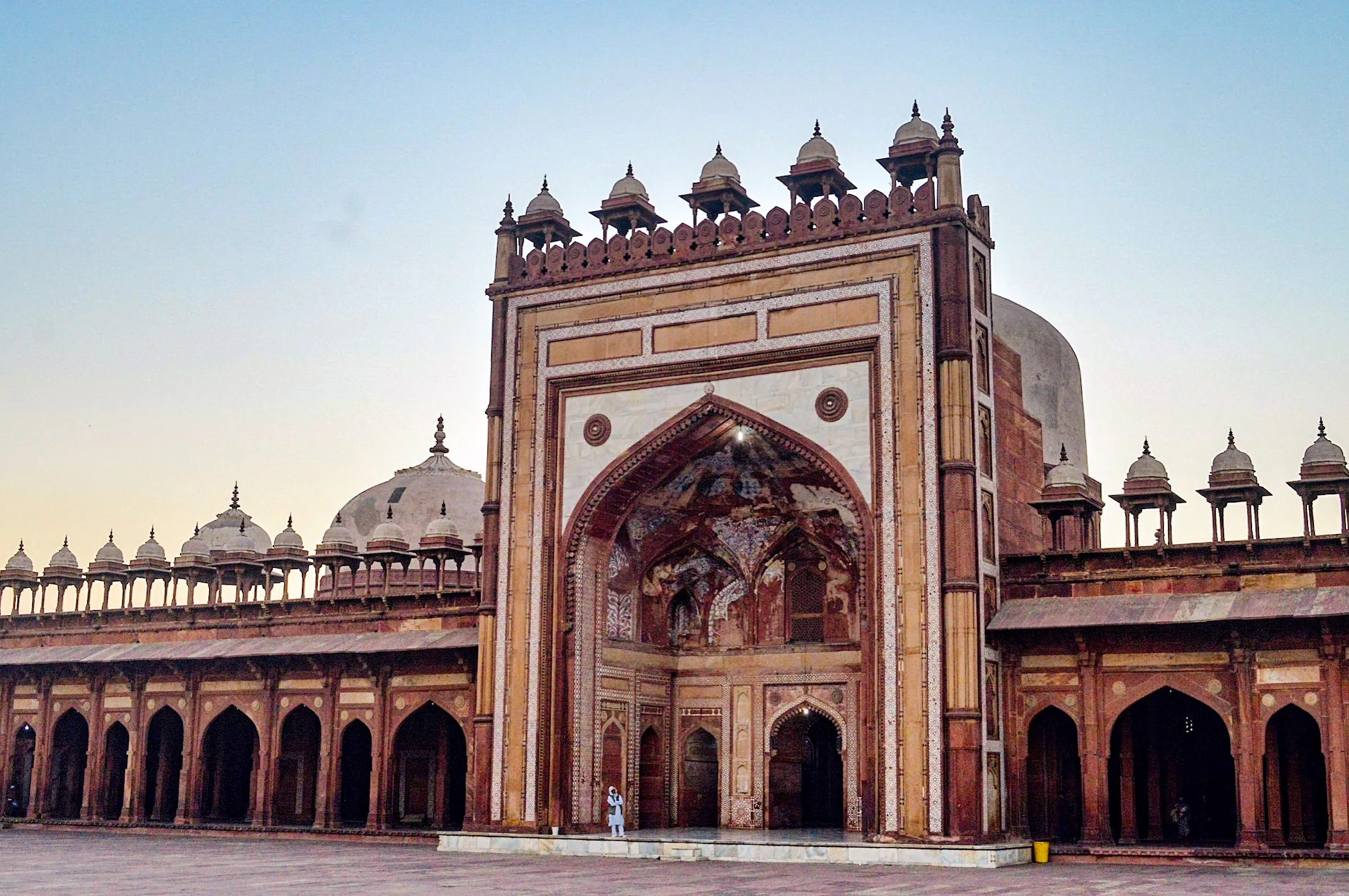

Help Preserve Buland Darwaza Fatehpur Sikri
Buland Darwaza Fatehpur Sikri matters. Not just as a tourist spot, but as actual living history. Your money goes straight to keeping it standing—documentation, repairs, community programs.
80G Tax Benefits on Every Donation
Your contribution is eligible for 50% tax deduction under Section 80G. Transparent operations with 100% fund utilization guarantee.
👇 Donate directly below with instant 80G certificate
3D scans and photos so if something breaks, we can rebuild it exactly right. Plus it creates a permanent digital record.
Actual physical work—fixing cracks, cleaning surfaces, stopping water damage before it gets worse.
Local engagement, awareness programs, and sustainable heritage tourism development.
Cultural Significance
Buland Darwaza, the "Gate of Magnificence," stands as a colossal testament to Mughal emperor Akbar's military prowess, religious tolerance, and architectural ambition. Located in Fatehpur Sikri, his deserted capital city, this imposing structure transcends its function as a mere gateway; it embodies a complex interplay of historical, political, and artistic narratives that shaped the Indian subcontinent during the Mughal Rajput period. The construction of Buland Darwaza in 1601 CE directly commemorates Akbar's decisive victory over the Gujarat Sultanate in 1573. This victory was not just a military triumph; it significantly expanded the Mughal empire's reach, securing crucial trade routes and solidifying Akbar's control over western India. The sheer scale of the Darwaza, soaring 54 meters high, was deliberately designed to impress upon visitors – be they ambassadors, traders, or subjects – the vast power and reach of the Mughal emperor. It served as a symbolic declaration of Akbar's dominance, a physical manifestation of his imperial ambitions. Beyond its military significance, Buland Darwaza also reflects Akbar's evolving religious and philosophical outlook. Built at the entrance to the Jama Masjid, one of the largest mosques in India, the gateway's placement underscores the importance of Islam within the Mughal empire. However, Akbar's reign was also marked by his pursuit of religious harmony, exemplified by his Din-i Ilahi, a syncretic faith that attempted to bridge the divides between different religious traditions. This spirit of inclusivity is subtly reflected in the Darwaza's architectural style. While predominantly Mughal in character, it incorporates elements of Persian, Indian, and Timurid architectural traditions, mirroring Akbar's vision of a unified empire encompassing diverse cultural influences. The intricate carvings and embellishments adorning the gateway, featuring both Islamic calligraphy and traditional Hindu motifs, further symbolize this intermingling of cultures. The architectural language of Buland Darwaza itself speaks volumes about the Mughal Rajput period. The gateway's construction showcases the mastery of Mughal engineering and craftsmanship. The use of red sandstone, a characteristic feature of Mughal architecture, lends the structure a majestic aura. The semi-octagonal plan, the towering archway, and the intricate jali work are all hallmarks of the Mughal style, demonstrating the empire's sophisticated artistic sensibilities. However, the influence of Rajput architectural traditions, particularly in the decorative elements, is also discernible. This fusion of Mughal and Rajput architectural styles, prevalent during Akbar's reign, highlights the growing interaction and cultural exchange between the two powerful groups. Akbar's strategic alliances with Rajput princesses further cemented this relationship, contributing to a unique architectural hybrid that characterized the period. Furthermore, the inscription on the central face of the Darwaza, a verse from the Quran, provides a glimpse into Akbar's personal beliefs. It emphasizes the transient nature of worldly power and the ultimate supremacy of God, suggesting a degree of humility despite his vast empire. This inscription, juxtaposed with the Darwaza's imposing grandeur, creates a compelling tension between earthly power and spiritual aspiration, a recurring theme in Mughal art and architecture. In conclusion, Buland Darwaza is more than just a magnificent gateway; it is a historical document etched in stone. It encapsulates Akbar's military triumphs, his vision of a religiously tolerant empire, and the flourishing artistic and architectural landscape of the Mughal Rajput period. It stands as a powerful symbol of Akbar's legacy, a reminder of a pivotal era in Indian history where military might, political strategy, and artistic expression converged to create a unique cultural tapestry. For anyone seeking to understand the complexities of Mughal India, Buland Darwaza offers a profound and visually stunning starting point. It is a testament to the power of architecture to not only commemorate historical events but also to embody the spirit of an age.
Architectural Excellence
Showcases Mughal architecture + Indo-Islamic + Persian, Indian, and Timurid influences. architectural style, representing unique construction techniques and artistic traditions.
Educational Value
Serves as a living classroom for architecture students, historians, and heritage enthusiasts studying India's cultural legacy.
Community Impact
Supports local communities through heritage tourism, traditional craftsmanship, and cultural pride.
50% tax deduction on donations
Full financial reports published
Your donation goes directly to conservation
Every Donation Makes a Difference
Your contribution, no matter the size, helps preserve Buland Darwaza Fatehpur Sikri for future generations. Together, we can protect India's irreplaceable heritage.
Donate to Save Buland Darwaza Fatehpur Sikri- 1
Review Site Information
Learn about Buland Darwaza Fatehpur Sikri's historical significance, current conservation needs, and how your donation will be used for preservation efforts.
- 2
Choose Donation Amount
Select your contribution amount. Every ₹500 helps document one heritage site. Larger donations fund restoration projects. Get 50% tax deduction under 80G.
- 3
Make Secure Payment
Complete your donation via UPI, credit/debit card, or net banking. All transactions are encrypted and secure through Razorpay payment gateway.
- 4
Receive Tax Certificate
Instant 80G tax exemption certificate emailed to you. Use this certificate while filing ITR to claim tax deductions and save money.
- 1Direct impact on Buland Darwaza Fatehpur Sikri preservation and conservation
- 280G tax benefits - save 30-50% through tax deductions
- 3100% transparency with detailed fund utilization reports
- 4Supports documentation, restoration, and community engagement
- 5Helps prevent deterioration of irreplaceable cultural heritage
- 6Enables future generations to experience this architectural marvel